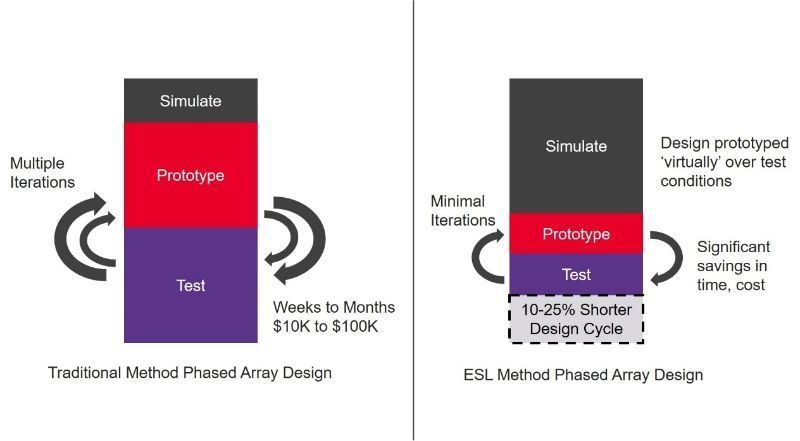
Raise the Level of Design Abstraction to Accelerate Development of 5G and mmWave Phased Array Systems
The time of year is nearing for another Mobile World Congress (MWC) in beautiful Barcelona, Spain. Having attended the satellite MWC LA show in October 2019, I noticed how much territory the mobile space has grown to encompass. Walking through the show halls, I saw everything from large mobile network operators to specialty lift service trucks and even small vendors of handset repair parts hawking their wares. What I did not see represented was a critical element of the mobile development ecosystem: the design tools required to create the complex network equipment and electronic systems we take for granted.
Our appetite for mobile data and services is insatiable. With 5G networks and communication capabilities all the rage, these systems will be more pervasive than their predecessors in a few short years. For this new technology to deliver on the promise of higher data rates and bandwidth, deployment must be in much denser configurations. Instead of the occasional large dish antennas and cell towers we know so well today, we will see many smaller picocell antennas in 5G deployments. The obvious places to start are venues where people congregate with their mobile devices — for example, stadiums and sporting arenas, such as the 2020 Summer Olympics in Japan.
Demand for 5G Kicks into High Gear
As 5G heads toward the mainstream, one key to making it happen faster is the aforementioned design tools and methods talented engineers use to create phased array antennas and picocells. To bring these antennas with their electronically steerable signal beams to market, engineers must move quickly. Traditional design methods rely on physical prototyping and testing in the chamber, then re-spinning the antenna designs to meet specific system requirements. That process will not cut it. There is not enough time. We want our 5G phones and services yesterday.
To satisfy rapidly emerging market opportunities and diverse design requirements, 5G design engineers need a more agile methodology that accelerates their development projects (Figure 1).

Figure 1. ESL virtual prototypes shorten the design cycle and lower development costs
Enter electronic system-level (ESL) design tools and workflows. ESL design has been around for a while. Only recently, however, have designers applied it to commercial phased array antenna design. High-fidelity modeling and very fast simulation speed drive ESL methodology. It is the modern way to develop phased arrays on specification, on time, and within budget. ESL methods raise the level of design abstraction, which increases engineering productivity. Before building the physical prototype, designers build an ESL virtual prototype that enables them to fully explore the design space and arrive at a topology that satisfies the specifications. The goal of ESL methods is first-pass design success.
Keysight’s PathWave System Design (SystemVue) provides a complete ESL design solution for developing modern phased arrays for 5G and mmWave products. For more information on the benefits of adopting ESL methods in your phased array design projects, read our white paper, Four Advantages System-Level Design Delivers for Phased-Array Development. Visit PathWave System Design (SystemVue) to learn more about Keysight’s ESL software solution and apply for a free 30-day trial.